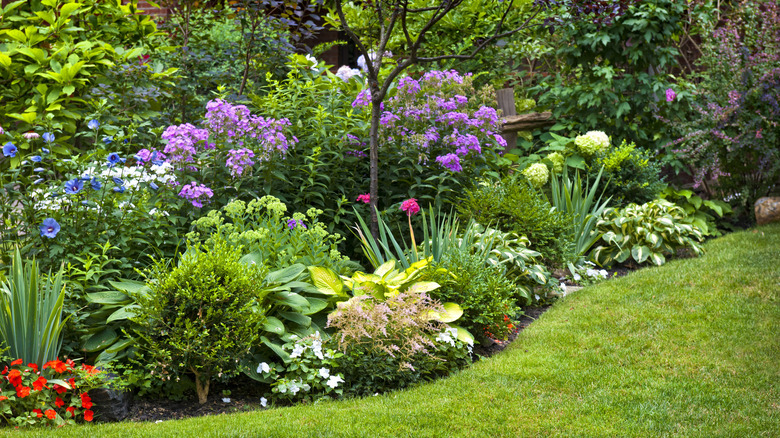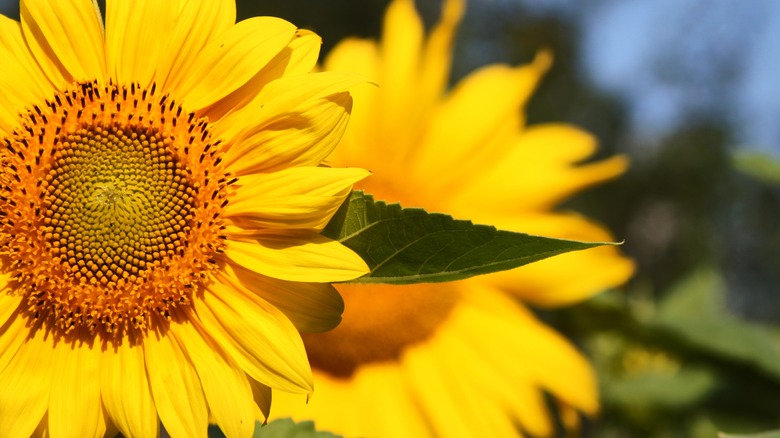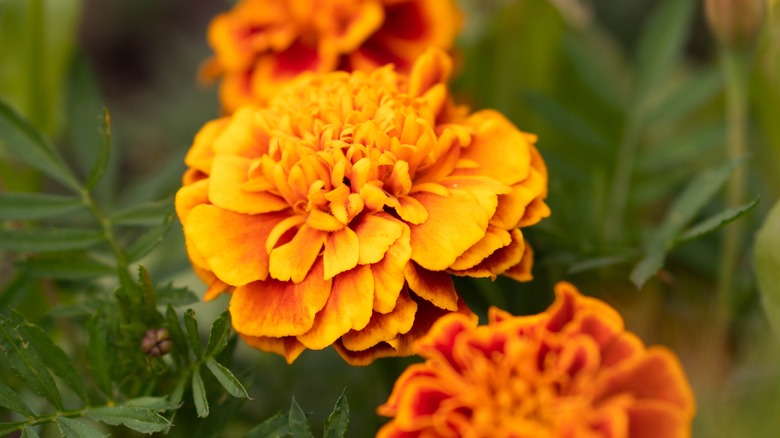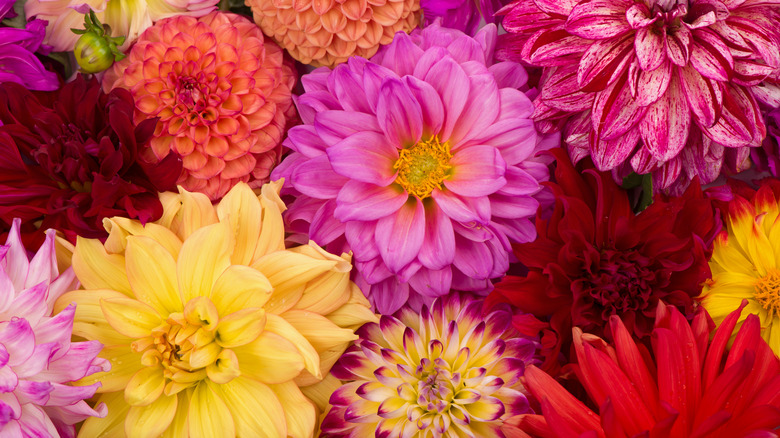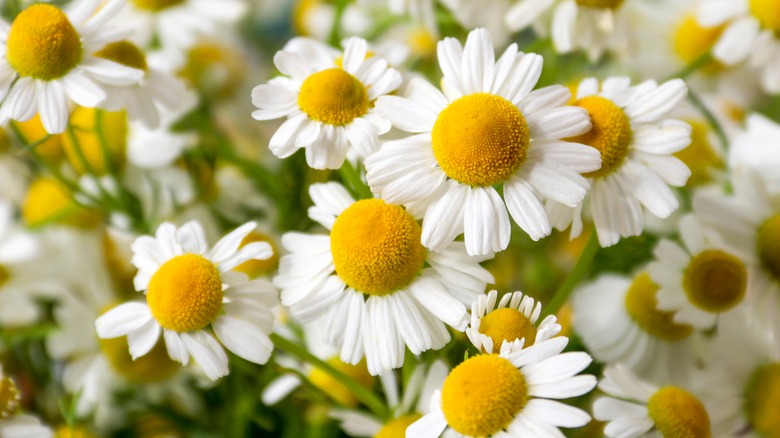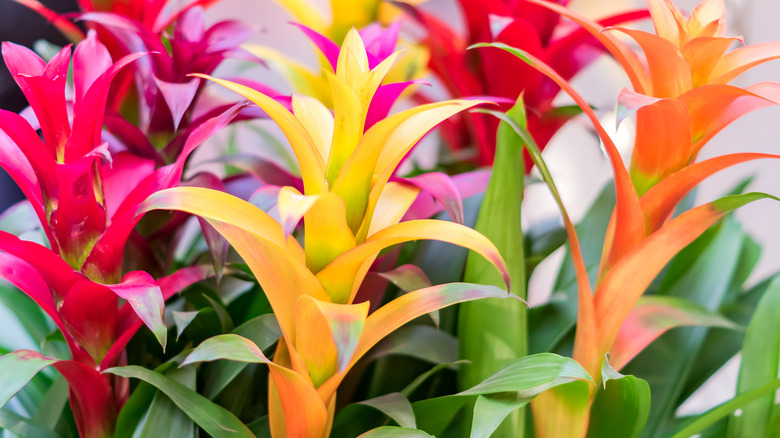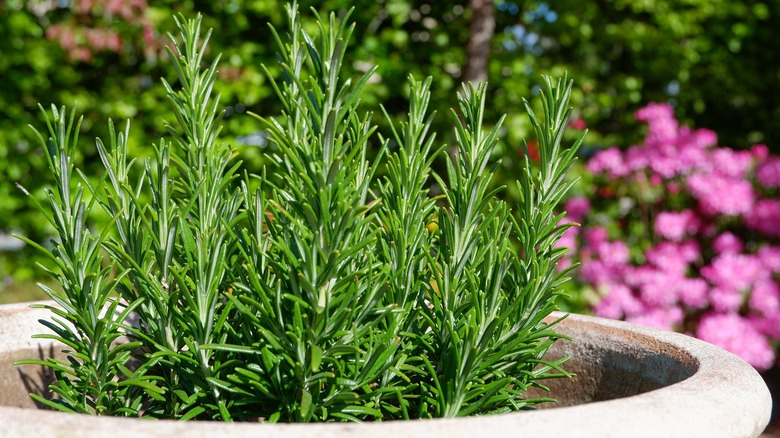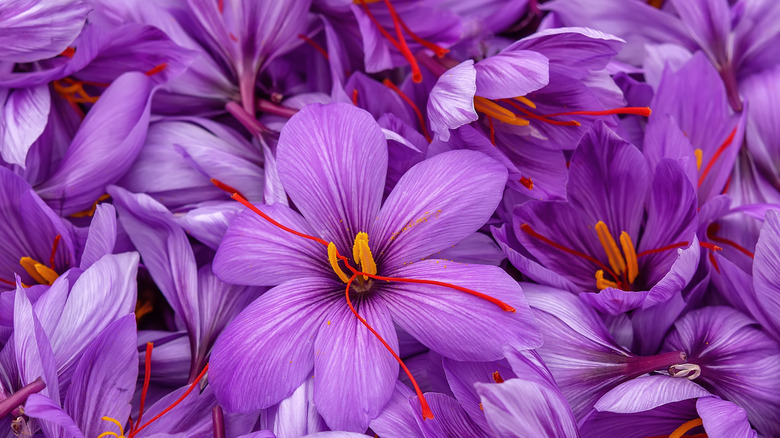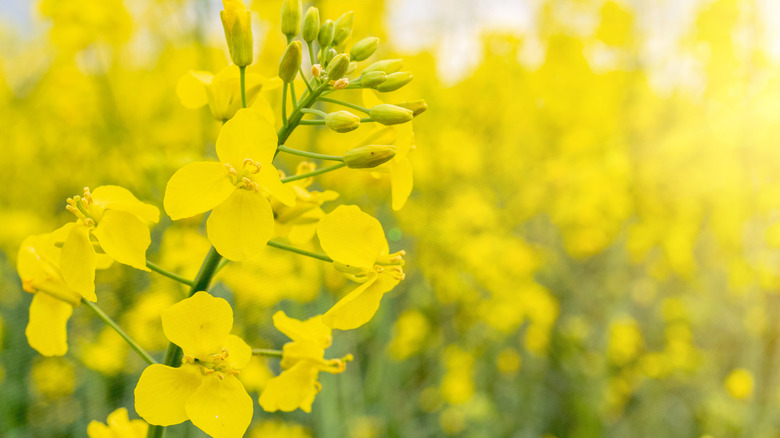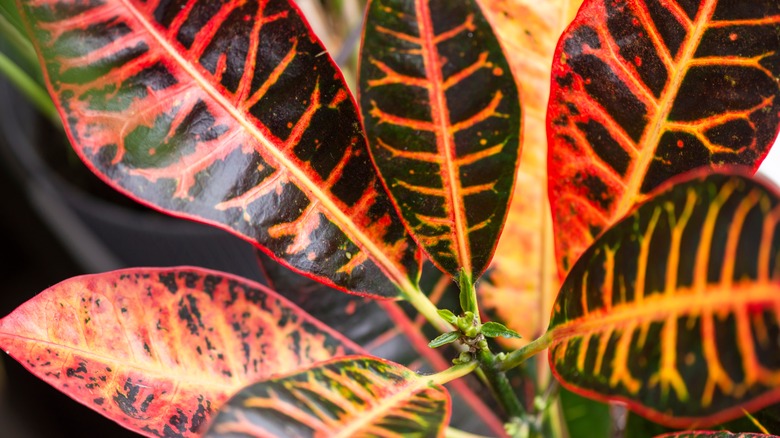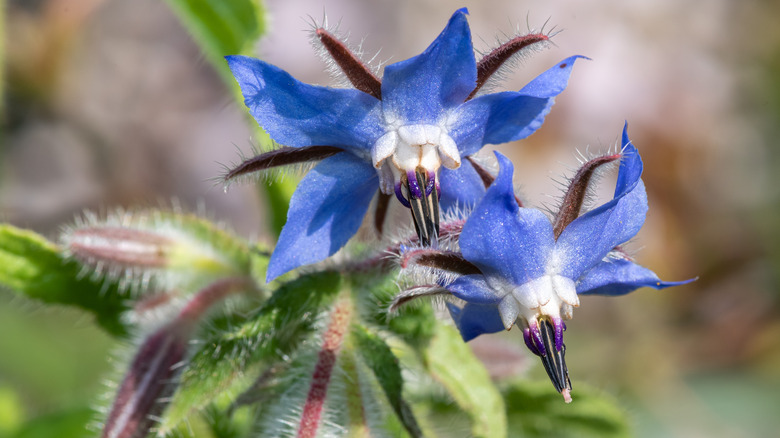The Best Plants For Your Garden If You're A Leo
Ambitious, creative, and vivacious. For those born under the fifth zodiac sign of Leo (July 23 to August 22), you know how to bring energy and light into a space. Bold in spirit, Leos are governed by the sun, as they generally convey confidence with a bright personality. Like many flowers and plants, they are colorful and heart-warming while also evoking passion and allure. Colors among existing plant life that may resonate with a boisterous lion may be golds, oranges, and yellows. Warm and cheerful, these vibrant hues are especially present in Leo's birth flowers, like sunflowers and marigolds (via SnapBlooms). So, if you're a Leo who seeks admiration in new places, look to your garden.
What are some other significant plants for someone born under this sign? From summer to fall, you might radiate Leo energy through various vegetables and herbs, including appealing flowers and charismatic blooming plants. Other ways to spread some of Leo's fiery aura within your garden might be to plant graceful and vivid dahlias or sweet and friendly daisies. Whether you seek attention or fortune, Leo's selection of plants is fearless and dynamic. Keep reading to discover some of the ultimate cultivars and vegetation to showcase within a Leo garden.
1. Sunflower
A stunning presence, the common sunflower (Helianthus spp.) is the most prominent of Leo's birth flowers with its gaping round bloom and intensely sunny petals. Wild or cultivated, the head of the majestic flower exudes its power, as it symbolizes Leo's warmth and intellect (via Metropolitan Girls). The sunflower flourishes with the summer sun and sustains into the fall.
Bloom season: Summer to fall
USDA Growing Zone: 4 to 8
Growing conditions: 6 to 8 hours of sun, regular watering
Soil Type: Nutrient-rich (somewhat alkaline)
Size: Up to 16 feet tall (dwarf sizes may reach 1 to 4 feet)
2. Marigold
Often seen in lively yellow or golden-orange colors, the marigold (Tagetes), known as the herb of the sun, comes in a few popular varieties, including African, French, and Signet. Bursting with Leo charm, marigold thrives throughout most of the year, from late spring until the first icy chill, per Garden Design. Like a lion's mane, the marigold is a delightful, resilient plant with abundant blooms.
Bloom season: Late spring to fall
USDA Growing Zone: 2 to 11
Growing conditions: Full sun
Soil Type: Well-drained, loamy
Size: 6 inches to 4 feet tall, 2 feet wide
3. Dahlia
Vivid and elegant, the eye-catching dahlia is a member of the Asteraceae (or Compositae) family and blooms in mid-July near the start of Leo's reign into the fall. The plant loves well-draining soil in non-scorching, temperate climates, and the energetic morning light. From pink and gold to yellow and orange, dahlias are found in many intense colors (via Almanac).
Bloom season: Late summer to fall
USDA Growing Zone: 8 to 11
Growing conditions: 6 to 8 hours of daylight
Soil Type: Loosened, well-draining, drip irrigation
Size: Up to 6 feet tall, 2 inches wide
4. Chamomile
Pretty as a daisy, chamomile (Matricaria recutita) is an ancient herb known for its medicinal properties, including promoting restful sleep and relaxation. Native to Europe, there are two types of chamomiles, German (for tea) and Roman (a creeping plant), per NCCIH. With delicate white petals that encompass a bright, round yellow center, this summer bloomer loves the sun yet can withstand dry heat.
Bloom season: Summer to fall
USDA Growing Zone: 3 to 9
Growing conditions: Full sun to partial shade
Soil Type: Fertile, organic
Size: 8 to 24 inches tall by 8 to 12 inches wide
5. Bromeliad
Exotic and tropical, bromeliad (Bromeliaceae) is an exuberant flowering plant that comes in many colors, including orange, red, or yellow. Like Leo's fiery character, it features wildly colorful blooms within charismatic green leaf stems. Indigenous to the Americas, bromeliad is an epiphyte that feeds off water-based nutrients from other vegetation rather than ground soil. It also grows well in pots, per Get Busy Gardening.
Bloom season: Annual
USDA Growing Zone: 9 and 10
Growing conditions: Bright, indirect sunlight (up to 16 hours)
Soil Type: Well-draining
Size: Up to 3 feet tall by 2 feet wide
6. Rosemary
Ancient and aromatic, rosemary (Rosemarinus officinalis) is a captivating evergreen herb used for numerous cooking and medicinal purposes, including the enhancement of memory. Originally from the Mediterranean, rosemary is part of the mint family (Lamiaceae). With a scent as potent as the sun, it may bring about love and prosperity for Leos (via Elite Daily). Rosemary thrives in a nourished garden bed as well as in pots.
Bloom season: Annual (late spring/early summer)
USDA Growing Zone: 8 to 10
Growing conditions: Full sun
Soil Type: Well-draining
Size: Up to 6 feet tall by 4 to 5 feet wide
7. Saffron
Able to enliven spirits, saffron (Crocus sativus) is considered an herb of the sun (via Rowan + Sage). With one purple bloom producing only a few red stigmas, saffron is a highly valued spice. Although its cultivation process is common in countries like Iran and Afghanistan, the plant is easily adaptable in a variety of climates, including the United States.
Bloom season: October to November
USDA Growing Zone: 5 to 8
Growing conditions: Direct sunlight (5 to 6 hours)
Soil Type: Nutrient-dense, sandy, loamy
Size: 6 to 12 inches tall by 2 to 4 inches wide
8. Mustard
Stemming from ancient India, mustard (Brassica juncea) is a versatile plant that can be used as a spice or eaten for its greens. An annual cultivar, each stem features four lemon yellow petals as delicate as butterfly wings when mature. Mustard is known for its numerous health benefits, including aiding digestion, per Fine Gardening. While it blooms in spring, you might also plant seeds during that time for prosperous summer growth.
Bloom season: Spring
USDA Growing Zone: 6 to 11
Growing conditions: Full sun
Soil Type: Rich, well-draining
Size: 6 to 20 feet tall by 20 feet wide
9. Croton
Fiery and dynamic, the croton plant (Codiaeum variegatum) comes in a variety of colors, including yellows, oranges, reds, and pinks. The flowering cultivar's speckled leaves may add a touch of the tropics to a Leo's den. Native to Southeast Asia and Oceania, croton often thrives wildly as a shrub, as all parts of it are toxic if ingested or if white sap is rubbed onto the skin (via Plant Care Today).
Bloom season: Annual
USDA Growing Zone: 9 to 11
Growing conditions: Full sun, partial shade
Soil Type: Moist, well-draining
Size: Up to 10 feet tall and wide
10. Borage
Claiming its star power, borage (Borago officinalis), or starflower, is an annual herb native to the Mediterranean. Both the leaves and blue-violet blooms are edible, resembling a light cucumber flavor, and are often used in various culinary dishes or as a garnish, per Borrago. Like Leo, borage is a star, as this pretty plant will bloom in June and July while attracting pollinators to your fruit and vegetable garden.
Bloom season: Summer
USDA Growing Zone: 3 to 10
Growing conditions: Full sun, partial shade
Soil Type: Moist, well-draining
Size: Up to 3 feet tall by 2 feet wide
